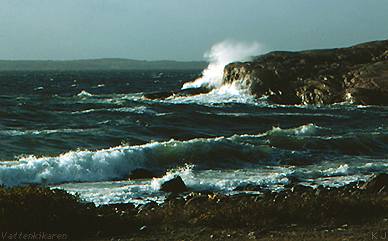 |
|
What is a cliff or rocky beach?
 Beaches are built with material of varying
grain size. Clay is composed of very small grains that are less than 0,002
mm; silt has a grain size between 0,002-0,02
mm; fine sand between 0,02-0,2 mm; common sand between 0,2-2 mm; gravel
between 2-20 mm; stones between 2-20 cm; and blocks are larger than 20cm.
Those stones and blocks that roll amongst each other in the waves are known
as cobblestones. The largest blocks and solid substrate are known as cliffs.
Sometimes, these different particles are very well sorted so there is good
reason to call beaches after a certain type, but quite often beaches can
contain material of varying grain size.
Beaches are built with material of varying
grain size. Clay is composed of very small grains that are less than 0,002
mm; silt has a grain size between 0,002-0,02
mm; fine sand between 0,02-0,2 mm; common sand between 0,2-2 mm; gravel
between 2-20 mm; stones between 2-20 cm; and blocks are larger than 20cm.
Those stones and blocks that roll amongst each other in the waves are known
as cobblestones. The largest blocks and solid substrate are known as cliffs.
Sometimes, these different particles are very well sorted so there is good
reason to call beaches after a certain type, but quite often beaches can
contain material of varying grain size.
Those beaches that are composed of smaller particles are described
under the chapter about sand
beach ecology. In this chapter about cliff and rocky beach ecology we
tell you about beaches that are comprised of stones and larger material
and we go up the beach as far as the sea spray reaches and as deep as there
is enough light for algae to grow.
 |
Page
2 of 52 |
 |
|



